ホーム → 文法 → DoJG main menu → 基本 → Basic Page 488
Conjunction
| A conjunction that lists two or more items, actions or states as inexhaustive examples. | And; or |
| 【Related Expression: たり; や】 |
(ksa). 私はバッハとかモーツアルトとかベートーベンが好きだ・好きです。
I like Bach, Mozart and Beethoven, among others.
(ksb). 疲れた時はお風呂に入るとか早く寝るとかしなさい。
When you are tired, do things like taking a bath or going to sleep early.
| (i)Noun | とか Nounとか… | |
| 学生とか先生とか… | Students and teachers… (among others) | |
| (ii)Sinformal | とか Sinformalとかする | |
| テレビを見るとか本を読むとかする | Do such things as watching TV or reading books |
(a). 日本の茶道とか生け花とかいうものをよく知らない。
I don't know much about things like the Japanese tea ceremony and flower arranging.
(b). A:どんな日本の映画を見ましたか。 B:黒沢の「七人の侍」とか「生きる」とか「影武者」を見ました。
A: What kind of Japanese movie did you see? B: I saw Kurosawa's Seven Samurai, Ikiru and Kagemusha.
(c). A:日曜日にはどんなことをしていますか。 B:音楽を聞くとか、本を読むとかしています。
A: What sorts of things do you do on Sundays? B: I do things like listening to music or reading books.
1. The conjunction とか is a combination of the quote marker と3 and か1. That is why とか is often followed by the verb 言う 'say', as in Example (a). When とか is followed by 言う, as in (1), it is not a conjunction; it is a quote marker. The か indicates the speaker's uncertainty about the quoted report.
2. Noun1とか言うNoun2 meaning 'Noun2 that is called Noun1' is another example of とか used in the above sense.
3. SentenceとかSentenceとかする is used when a statement refers to something in general rather than to something specific. Thus, this structure is inappropriate in (3).
(See Related Expression.)
【Related Expression】
たり~たりする, like SentenceとかSentenceとかする, indicates an inexhaustive listing of examples. It differs from SentenceとかSentenceとかする, however, in that it can be used in both general and specific statements. As noted in Note 3, the とか construction can only be used in general statements. Thus, the grammatical version of (3B) is [1].
[1]
When たり~たりする indicates alternative actions or states, it cannot be replaced by とか.
[2]